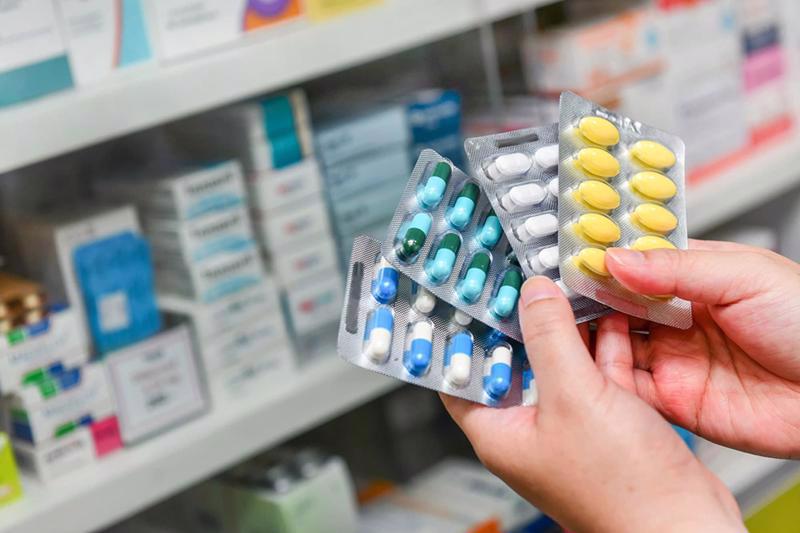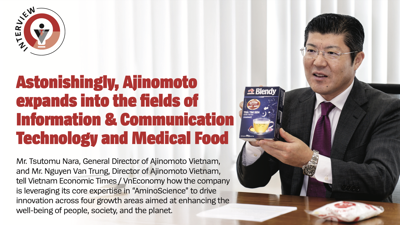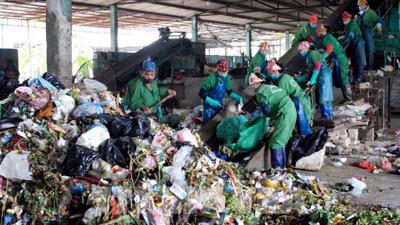New perspective for pharmaceutical industry
Technology transfer is a game-changer for Vietnam’s pharmaceutical industry, boosting production capabilities and paving the way for the creation of high-quality, innovative drugs and vaccines.

To elevate Vietnam’s pharmaceutical industry to regional standards while ensuring affordable access to quality medicines, the government has approved the National Strategy for Developing the Pharmaceutical Industry to 2030 and Vision to 2045. The ambitious roadmap targets transforming Vietnam into a hub for pharmaceutical production and technology transfer in ASEAN, enhancing domestic supply while boosting exports and integrating deeply into global value chains.
By 2030, the strategy envisions domestically-produced drugs accounting for 80 per cent of the market by volume and 70 per cent by value. It also aims for technology transfer of at least 100 original pharmaceuticals, vaccines, and biological products. These advancements will enable the development of high-quality, effective treatments and vaccines for disease prevention and management.
The critical question is: How can Vietnam achieve these targets? What steps are required to secure technology transfer agreements, develop coordinated production processes, and ensure the capacity to manufacture original and biosimilar products at global standards?
Lack of coordination
At a recent policy dialogue workshop entitled “Fostering technology transfer in pharmaceutical and vaccine manufacturing in Vietnam: International experience and recommendations”, hosted by the Health Strategy and Policy Institute at the Ministry of Health (MoH) with support from AstraZeneca Vietnam, Mr. Ta Manh Hung, Deputy Director of the Drug Administration of Vietnam, highlighted the impressive growth in Vietnam’s pharmaceutical market, from $3.4 billion in 2015 to $7.46 billion in 2022, for an annual growth rate of 12-15 per cent.
Vietnam currently boasts 238 GMP (Good Manufacturing Practice)-certified pharmaceutical factories under World Health Organization (WHO) standards, including 17 meeting GMP-EU standards. The country has successfully produced 15 vaccines, fully meeting the demand for the national Expanded Program on Immunization and covering 10 per cent of service-based immunization needs.
However, challenges persist. Vietnam’s pharmaceutical production technology ranks just below Level 3 out of 4 on the WHO scale, and domestic drug production meets only 70 per cent of market volume and 46.3 per cent of market value; well short of the 2030 targets. Dependence on imported raw materials, a focus on generic drugs over innovative and high-tech medicines, and limitations in vaccine research further underscore the industry’s hurdles. Current technology transfer efforts have primarily involved conventional biologicals, with advanced technologies like mRNA and recombinant techniques largely absent.
While numerous incentive policies have been introduced, including on investment, tax benefits, loan access, and human resources development, progress remains limited. As of 2024, only 20 innovative drugs have been transferred to Vietnam, primarily by companies like AstraZeneca, Servier, and Viatris, with just three receiving marketing authorization.
Mr. Hung identified key barriers as including insufficient capital, fragmented infrastructure, and a lack of skilled professionals in research and production. To overcome such challenges, Vietnam must implement bold and targeted policies to accelerate technology transfer and strengthen its domestic pharmaceutical manufacturing capabilities, unlocking the industry’s full potential.
Unlocking potential through technology transfer
Experts at the workshop highlight the transformative potential of technology transfer in strengthening Vietnam’s pharmaceutical industry. By leveraging this, Vietnam can swiftly adopt cutting-edge technologies, reduce research and development (R&D) costs, and produce high-tech medicines that ensure medical security and a stable supply chain. Beyond production, these advancements will enhance the industry’s global competitiveness, attract foreign investment, and open doors for expanded exports, solidifying Vietnam’s position in the regional pharmaceutical market.
Ms. Vu Nu Anh, Deputy Director of the Department of Health Insurance at the MoH, emphasized the synergy between health insurance and the domestic production of original drugs. Local manufacturing not only makes high-quality medicines more accessible but also lowers costs for patients. She urged policymakers to introduce targeted incentives to accelerate the adoption of technology-transferred medicines.
Meanwhile, Dr. Nguyen Khanh Phuong, Director of MoH’s Health Strategy and Policy Institute, underscored the critical role of government support in successful technology transfer. Drawing from international experience, she pointed out the importance of favorable policies, including investment incentives, intellectual property protections, and infrastructure enhancements, to attract multinational corporations to Vietnam’s pharmaceutical landscape.
Experts further stressed the need for comprehensive, end-to-end incentive policies throughout the technology transfer process. Addressing practical challenges, such as negotiating fair price reductions and ensuring timely drug registration approvals, will be pivotal in achieving meaningful outcomes.
Associate Professor Le Van Truyen, a senior pharmaceutical expert and former Deputy Minister of Health, outlined a bold vision for Vietnam’s pharmaceutical sector. He called for robust domestic investments to upgrade existing facilities and build new factories, particularly for producing biological drugs and biosimilars. These efforts would enable Vietnam to meet rising global standards and diversify its product offerings.
With advantages such as a growing market, skilled workforce, and a strategic focus on pharmaceutical development, Vietnam is well-positioned to lead regional advancements. The establishment of a large-scale pharmaceutical-biological industrial park in northern Thai Binh province, with total investment of VND3.8 trillion ($149.5 million), offers a unique opportunity to adopt breakthrough biotechnologies, including cancer drug production. This would provide innovative treatment options that chemical drugs alone cannot address, empowering doctors and patients with cutting-edge solutions to tackle complex health challenges.
Long-term benefits
Mr. Hung shared insights on recent updates to the Law on Pharmacy, highlighting key changes that introduce preferential policies designed to streamline the process of granting marketing authorizations for critical medicines. This includes new drugs, originator drugs, rare medicines, vaccines, and high-tech drugs. These policies are aimed at encouraging the production of generic drugs, biosimilars, and domestically-manufactured medicines, particularly those that have undergone clinical trials in Vietnam.
Additionally, there are initiatives to regulate pricing and offer discounts for new medicines, originator drugs, high-tech therapies, vaccines, and rare medicines produced under technology transfer agreements. These efforts prioritize the procurement of locally-produced originator drugs, generic medicines, and biosimilars.
He also emphasized the importance of prioritizing biologics and advanced therapies. The National Strategy for Developing the Pharmaceutical Industry to 2030 and Vision to 2045 underlines the strategic need for significant investment in biologics manufacturing, including vaccines, recombinant products, and cutting-edge treatments such as cell and gene therapies. “This emphasis demonstrates Vietnam’s strong commitment to embracing advanced pharmaceutical technologies,” he explained.
Successful technology transfer in drug and vaccine production requires rigorous quality control, intricate processes, substantial investment (ranging from $5 million to $20 million for chemical drugs), extended timelines, often spanning over five years, and a high demand for skilled workers, Dr. Phuong pointed out. However, she continued, the rewards are clear: long-term, sustainable growth, improved technological capabilities, a robust ability to produce high-value medicines, enhanced competitiveness for domestic firms, and a significant contribution to national economic and social development.
“Global experience reveals that the key to successful technology transfer lies in robust government support,” she added. “This includes issuing favorable policies, providing investment incentives, safeguarding intellectual property, and enhancing infrastructure to create an environment that attracts multinational companies to invest in technology transfer projects.”
Mr. Atul Tandon, Country President of AstraZeneca Vietnam, said the Vietnamese Government’s strategy is ambitious, not just focusing on domestic pharmaceutical consumption but also on positioning Vietnam as an innovation leader capable of producing breakthrough medicines for the region. With the recent changes to the Law on Pharmacy, technology transfer in Vietnam’s pharmaceutical sector is gaining significant momentum.
“AstraZeneca has been actively pursuing technology transfer since 2022, and while the legal framework is now in place, we still need clear guidelines to ensure smooth implementation,” he said. “Technology transfer should be seen as a long-term investment.” He also expressed AstraZeneca’s eagerness to continue collaborating with the Vietnamese Government and key stakeholders to achieve common goals in cross-border technology transfer, confident that cooperation across all sectors will overcome any challenges and ultimately benefit the people of Vietnam.







![[Interactive]: Economic overview - April 2025](https://media.vneconomy.vn/400x225/images/upload/2025/05/06/5a245778-67b1-4874-a8dc-21f8cfed62a6.png)